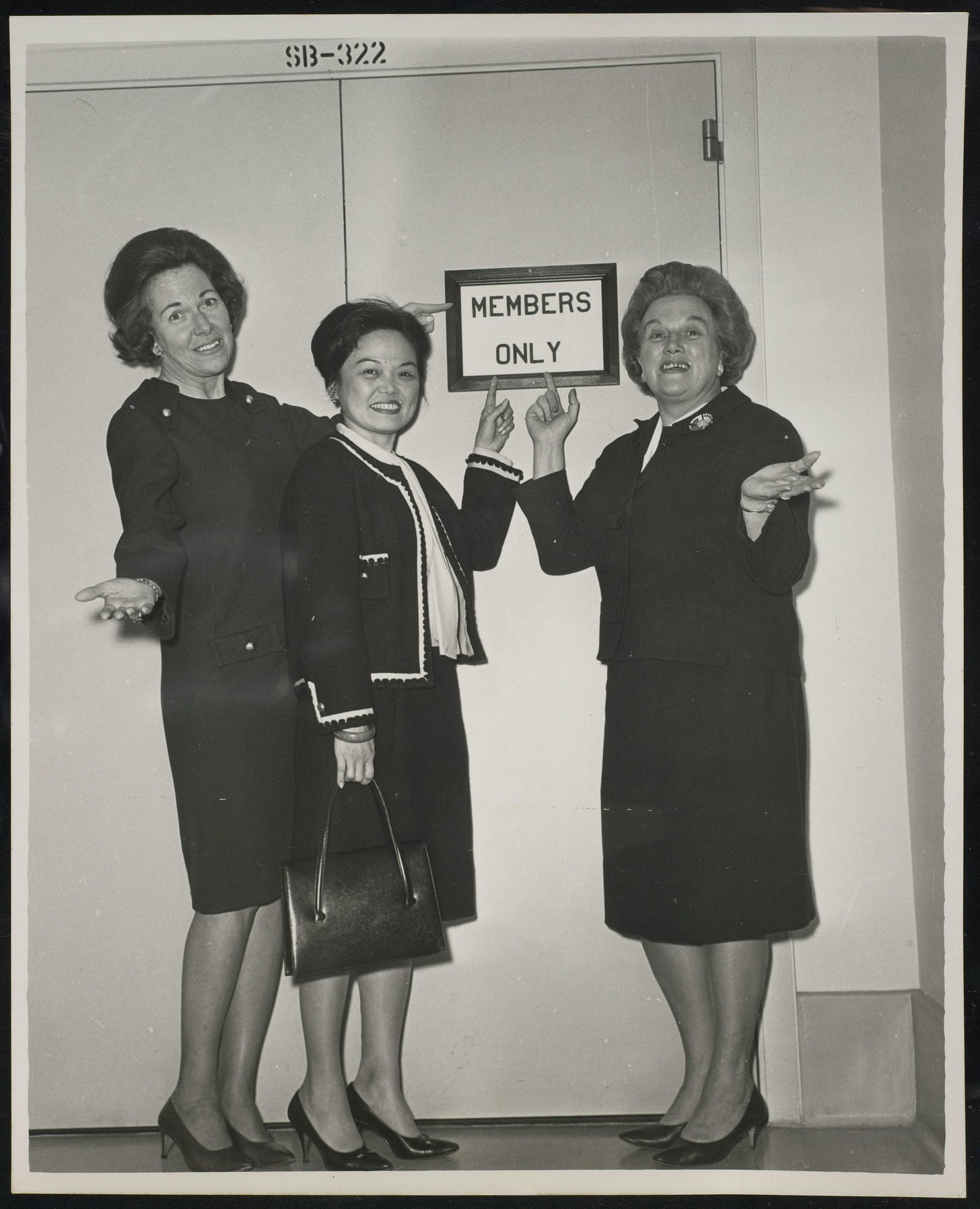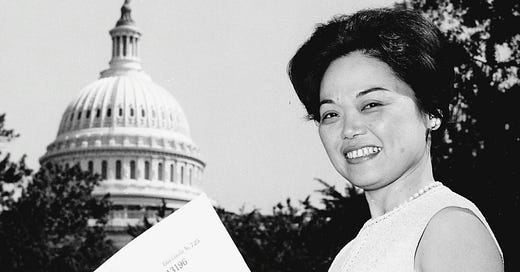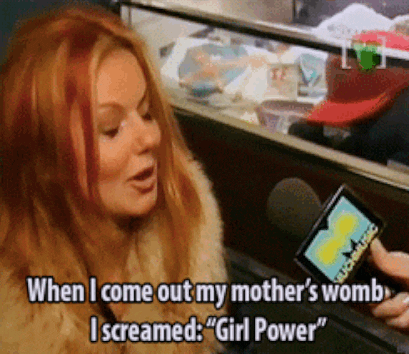Thank Her for Title IX 🎓
"If to believe in freedom and equality is to be a radical, then I am a radical." - Patsy T. Mink
Hello, readers 👋🏻
Welcome to the new folks who joined us this week! To give you a sense of the vibes we have going on here….
This week, we are learning about a badass legislator and lawyer. She broke every glass ceiling in her way and had a lengthy resume of “firsts.” Get your sunnies and sandals, because we’re off to Hawai’i 🏝
Patsy Takemoto Mink

Patsy Takemoto Mink was born Patsy Matsu Takemoto in Hawai’i in 1927. Patsy and her parents had lived on Maui for three generations. After Pearl Harbor, her father was detained and questioned about his Japanese heritage. Although he was returned to his family the next day, they lived in fear of being sent to an internment camp, and her father burned all of his Japanese mementos. Patsy said the experience, “[M]ade me realize that one could not take citizenship and the promise of the US Constitution for granted.”
Patsy was both a born leader and a smarty pants. She was the class President (the first female Class President) AND valedictorian at Maui High School. Even Paris Geller couldn’t accomplish that 😉 She went to college on the mainland, but she transferred to the University of Hawai’i because of the racism she faced on campus. For example, students of color weren’t allowed to live in the same dorms as white students. 😑 At her new university, she set out to become a doctor. Patsy joined the varsity debate team and was elected President of the Pre-Medicine Students Club. When Patsy graduated in 1948, she applied to several medical schools, but none accepted her. In some instances, they explicitly told her she was denied because she was a woman. 🙄
Naturally, Patsy did the next high-achieving thing she could do and applied to law school. She attended and graduated from the University of Chicago Law School, where she was one of two women in her class. I can’t imagine the culture shock moving from Hawai’i to Chicago and also being one of a handful of women in law school. She was the first Hawai’ian nisei woman to graduate from the University of Chicago Law. Patsy later said it had been a mistake that she had even been admitted to the University of Chicago, as they had only accepted her because they assumed she was a foreign student. While in law school, she met her husband, John Mink. They met while playing bridge (a card game my parents have tried and failed to teach me many times). Patsy and John had a daughter, Gwendolyn (Wendy), and moved back to Honolulu.
Patsy passed the bar exam and started looking for jobs at law firms in Hawai’i. However, no one would hire her because she was (1) a woman, (2) a mother, or (3) in an interracial marriage 🤬 Was being a woman of color graduating law school in the 1950s not ENOUGH of a challenge? But, as Patsy always did, she pivoted. She started her own law practice and founded the Oahu Young Democrats. At her law practice, she took on many cases other firms wouldn’t, such as divorces, adoptions, and other women-focused issues.
In 1956, Patsy ran for the Territorial House of Representatives and won. In 1959, Hawai’i was officially recognized as a state, which meant it needed Congressional legislators! Patsy immediately put her hat in the ring to run for Congress. Unfortunately, the political powers in Hawai’i had other plans. They weren’t Patsy’s biggest fans because she didn’t let them rule her political agenda. In 1960, Patsy was asked to speak at the Democratic National Convention in Los Angeles.
During her speech, she said, “If to believe in freedom and equality is to be a radical, then I am a radical. So long as there remain groups of our fellow Americans who are denied equal opportunity and equal protection under the law ... we must remain steadfast, till all shades of man may stand side by side in dignity and self-respect to truly enjoy the fruits of this great land.”
Although she lost her Congressional election, she successfully won a seat in the Hawai’i State Senate in 1962. In 1964, they created a second House of Representatives seat in Hawai’i. She once again ran a grassroots campaign (as the Democrat Party didn’t support her campaign), with her husband serving as her campaign manager (yay supportive spouses). This time, Patsy won the election, making her the first Asian-American woman to serve in Congress and the first woman of color elected to Congress! A quick side note: Can you imagine having the resilience of Patsy Mink? Denied at every turn, and kept persevering and succeeding!
While in Congress, she focused on issues like education, affordable childcare, and gender and racial equity. Here are a few of her many accomplishments:
🌟 Authored and sponsored Title IX (prohibits sex discrimination in education)
🌟 Formed the Congressional Asian Pacific American Caucus
🌟 Passed the Women’s Educational Equity Act (gender equity in schools)
🌟 Introduced the Early Childhood Education Act (first federal child care bill)
🌟 Introduced the Comprehensive Child Development Act (bill to institute a national daycare system to support low-income households), she said it was her biggest disappointment in her career that this bill failed
🌟 Her other introduced/sponsored bills included: bilingual education, student loans, special education, professional Sabbaticals for teachers, universal health care, and Head Start

While in Congress, Patsy remained steadfast in her crusade for gender equity in the legislation she authored and in Congress itself. She and two other female Representatives (Charlotte Reid R-IL, Catherine May R-WA) protested the Congressional Health Club, which was only open to women during certain hours of the day, and offered no changing room for women. The reason for the limited hours? Male members liked to swim naked in the pool. 🤢 I’m not joking, you can look that up. Patsy and her fellow protestors showed up to a gym class in full workout gear (with a reporter), but they were denied entry into the class. It gained a lot of headlines, but equal access wasn’t provided to female members until 1985.
In 1970, President Nixon nominated Judge George Carswell to fill a seat on the U.S. Supreme Court. Judge Carswell was infamous for his rulings denying equal rights to women and people of color. Patsy Mink testified against him, which led to the Senate rejecting his nomination. They instead successfully nominated Judge Harry Blackmun, who you may know as writing the majority opinion in Roe v. Wade.
In 1972, Patsy was asked by the Oregon Democrats to run for U.S. President. She was courted for her political beliefs, including her staunch anti-war stance. Although she only received 2% of the votes, her run was significant as she once again took a principled stand against those in power.
There are so many other pieces of her life I couldn’t fit into this jam-packed newsletter. But, never fear, there are several books available on Patsy T. Mink’s incredible life.
📚 “Fierce and Fearless: Patsy Takemoto Mink The First Woman of Color in Congress” by Gwendolyn Mink (her daughter) and Judy Tzu-Chun Wu
📚 “Fall Down Seven Times, Stand Up Eight” written by Jen Bryant, illustrated by Toshiki Nakamura *this is a picture book for kiddos!
If you’re more of a visual person, watch this great video narrated by her daughter, Wendy.
🧵 Bits and Bobs 🧵
🎓 My friend Stacey recently received her PhD! She was featured in a Washington Post article about balancing obtaining a higher education degree and motherhood. It’s a great read. CONGRATS STACEY 🎉
🌎 A great article from the 19th about the Black mothers who fought the environmental disaster at Love Canal, but are very rarely discussed in the history of that movement.
That’s all for this week! I hope you are feeling inspired by the amazing life and resilience of Patsy T. Mink! Byeeee 👋🏻
Citations
https://www.womenshistory.org/education-resources/biographies/patsy-mink
https://history.house.gov/people/detail/18329
https://news.uchicago.edu/story/principled-politician-story-patsy-mink-first-woman-color-elected-congress
https://wams.nyhistory.org/growth-and-turmoil/feminism-and-the-backlash/patsy-mink/




